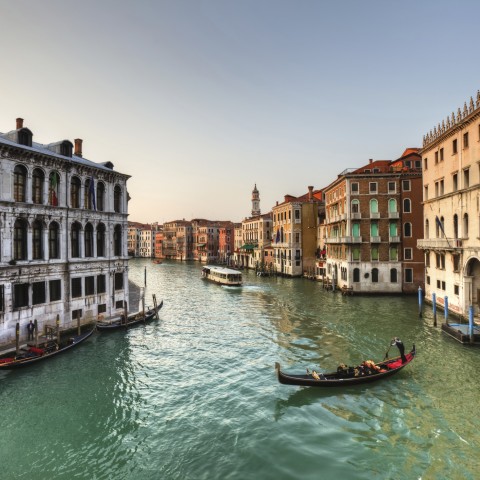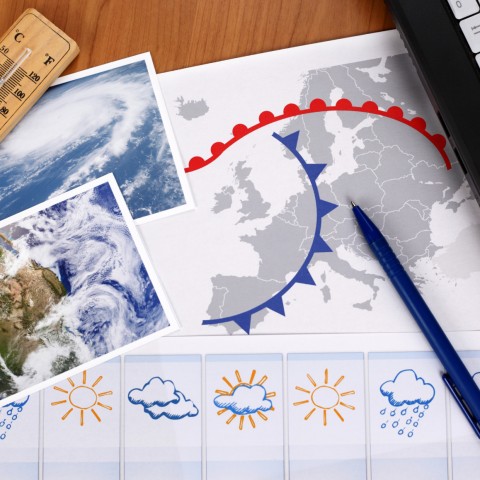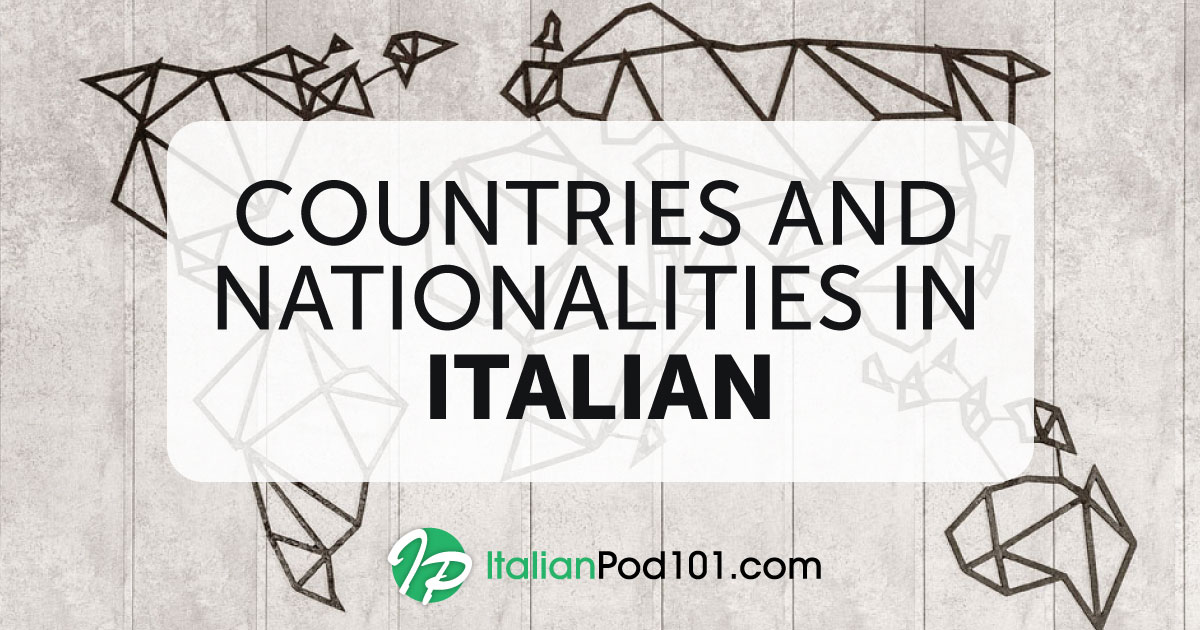Adjectives, in any language, are what we use to better describe what we’re talking about. They give color and meaning to our words. So, learning the top 100 Italian adjectives right away will help you quickly improve your conversation skills.
If you check an Italian grammar book or website, you’ll find out that there are many types of them:
- Demonstratives: questo; quello — “this; that”
- Qualificatives: bello; brutto — “nice; ugly”
- Possessives: mio; tuo — “my; your”
And there are many others!
Try and memorize a big list of Italian adjectives and their opposites. Let’s have fun with easy grammar lessons and exercises on how to use Italian adjectives with ItalianPod101.com. Andiamo! (Let’s go!)
Table of Contents
- Italian Adjectives Rules: How Do You Use Italian Adjectives?
- Italian Adjectives List of the Top 100+ Italian Adjectives
- Conclusion
1. Italian Adjectives Rules: How Do You Use Italian Adjectives?
First things first: Do Italian adjectives agree?
Yes, they need to agree in gender and number with the noun they refer to (and with the verbs, too!). So, when you’re speaking or writing, pay attention to the noun and note if it’s singular or plural, and masculine or feminine. And then, don’t forget to make the ending of the adjective and the noun agree, as in: una bella casa or “a nice house.”
Now, do adjectives come before or after nouns in Italian? In terms of position, the Italian adjective generally follows the noun. Yes, this is the opposite of what an anglophone is used to, so you’ll have to pay special attention to remember where to place the adjective in a sentence.
But, as you know, Italian grammar can have quite a few exceptions, and some adjectives can appear either before or after the noun, with a slightly different meaning.
This is the case with some of the most common Italian adjectives, the ones that you’ll find yourself using all the time. There isn’t a fixed rule for when you can invert the order, but here’s a tip: The adjective put after the noun is denotative (the meaning is literal). The adjective put before the noun is connotative (the meaning is figurative).
That’s why it’s very important to practice, practice, practice…can you guess the difference between the phrases listed below? If not, check this lesson!
| bello* | “beautiful; nice” | Un bel giorno / un giorno bello “A nice day” |
| buono** | “good; tasty” | Un buon amico / un amico buono “A good friend” |
| bravo | “good; able” | Una brava ragazza / una ragazza brava “A good girl” |
| brutto | “ugly; bad” | Un brutto film / un film brutto “A bad movie” |
| caro | “dear; expensive” | Una cara amica / una amica cara “A good friend” |
| cattivo | “bad” | Un esempio cattivo / un cattivo esempio “A bad example” |
| giovane | “young” | Un giovane attore / un attore giovane “A young actor” |
| grande | “large; great” | Una grande montagna / una montagna grande “A big mountain” |
| lungo | “long” | Un viaggio lungo / un lungo viaggio “A long trip” |
| nuovo | “new” | Un nuovo libro / un libro nuovo “A new book” |
| piccolo | “small; little” | Una piccola casa / una casa piccola “A small house” |
| stesso | “same” | Il giorno stesso / lo stesso giorno “The same day” |
| vecchio | “old” | Un vecchio palazzo / un palazzo vecchio “An old building” |
| vero | “true” | Un vero amore / un amore vero “A true love” |
*This adjective follows the same rule as the definite articles il, lo, i, gli, la le, so it changes its form according to the noun that follows, as in these examples:
- Un bel libro, as in il libro
“A nice book” - Un bello sport (lo sport)
“A nice sport” - Che begli occhi! (gli occhi)
“What beautiful eyes!” - Dei bei ragazzi (i ragazzi)
“Some good-looking boys”
This irregular adjectives rule does not apply if you place the adjective after the noun, as in un libro bello (a nice book).
Una bella giornata a Venezia (“A beautiful day in Venice”)
**The adjective buono (good; tasty) follows the same rule as the indefinite articles un, uno, un’, una, so it changes its form according to the noun that follows, as in these examples:
- Un buon amico, as in un amico
“A good friend” - Una buona scuola (una scuola)
“A good school” - Sei una buon’amica (un’amica)
“You are a good friend.”
This irregular adjectives form does not apply if you place the adjective after the noun, as in un amico buono (but in this case, the meaning is a little different as it means “a good-hearted friend”).
Other irregular Italian adjectives are grande and santo (“big” and “saint” respectively). In front of a masculine noun starting with a consonant, they change into gran and san:
- Tuo papà è un gran signore
“Your dad is a great gentleman.” - Quella è la statua di San Tommaso
“That is Saint Thomas statue.”
A very common use of adjectives is with the auxiliary verb essere (“to be”), in simple sentences such as: il mio gatto è bello (“My cat is nice.”).
In the case of demonstrative, indefinite, or possessive adjectives, as in most other languages, they always come before the noun:
- Il mio gatto
“My cat” - Questo gatto
“This cat” - Alcuni gatti
“Some cats”
2. Italian Adjectives List of the Top 100+ Italian Adjectives
Ready to learn Italian adjectives? Here’s our list of the most common Italian adjectives you should know, with their meanings and example sentences!
1- Describing dimensions, sizes, distance, number, and frequency
Among the most common and useful Italian adjectives are those that we use to describe how things are, relative to dimensions, distance, frequency, etc.
The best way to learn adjectives and memorize their meaning is to pair them up with their opposites:
- grande / piccolo — “big” / “small”
These can also be used in the sense of “older” / “younger”: Quando ero piccolo volevo fare l’astronauta or “When I was young, I wanted to be an astronaut.”
- largo / stretto — “wide” / “narrow”
These adjectives are used in Italian both for physical description, such as a for a street, or they can be used to mean “large” / “tight” as in clothes:
La strada era molto larga.
“The road was very wide.”Questi pantaloni sono un po’ stretti.
“These pants are a bit tight.” - alto / basso — “tall” / “short” or “high” / “low”
These opposite adjectives are also used to describe two different kinds of qualities, as they can refer to the height of something like a person or mountain, to volume, or even to moral qualities:
Mia sorella è più bassa di me.
“My sister is shorter than me.”Il volume della musica è troppo alto.
“The music volume is too high.” - pesante / leggero — “heavy” / “light”
Ho il sonno molto leggero.
“I have a very light sleep.” - vicino / lontano — “close” / “far”
Non ti sento, sei troppo lontano
“I can’t hear you, you are too far.”
When we’re describing quantities, we can’t do without indefinite adjectives, which are used to talk in general terms without being too specific about the exact amount (of things, people, etc.). That’s why they’re called “indefinite.” There are many indefinite adjectives in Italian, but the most commonly used are:
- Alcuni — “some” [always plural]
Alcuni bambini piangono sempre.
“Some children cry all the time.” - Poco — “little” / “few”
Pochi giorni fa
“A few days ago” - Molto — “many”
A Firenze ho visitato molti musei
“In Florence I visited many museums.” - Ogni — “each” [invariable + singular]
Vado in Italia ogni anno
“I go to Italy every year.” - Qualche — “some” / “a few” [invariable + singular]
Ho qualche idea.
“I have a few ideas.”
Indefinite adjectives, like possessive adjectives, can become adverbs if they’re used alone without a noun. You might want to check the rules on them.
2- Describing value
Whenever we talk, we’re always prone to judge the people or things around us. These useful Italian adjectives describe what we think about their value, and will help us in our conversations about them.
- buono / cattivo — “good” / “bad”
As in English, this adjective has a double meaning, both moral and relative to taste.
Pinocchio è diventato un bambino buono.
“Pinocchio became a good boy.”Questo gelato è molto buono.
“This ice cream is very good.” - bello / brutto — “beautiful” / “nice” and “ugly” / “bad”
Ho fatto un brutto sogno.
“I had a bad dream.” - fantastico / terribile — “amazing” / “awful”
Oggi è una giornata fantastica.
“Today is an amazing day.”
3- Describing feelings & senses
Italian adjectives for sensations and feelings, or for physical descriptions, are often used around the kitchen. These, for example, are the progression of adjectives linked to temperature:
- Gelato — “icy” / “frozen”
Vado a pattinare sul lago gelato.
“I go swimming on the frozen lake.” - Freddo — “cold”
La zuppa è diventata fredda.
“The soup got cold.” - Tiepido — “warm”
La sera bevo del latte tiepido.
“At night I drink warm milk.” - Caldo — “hot”
Preferisco il té caldo.
“I prefer hot tea.” - Bollente — “scalding”
Attenzione, l’acqua è bollente!
“Watch out, the water is scalding.”
Did you know that Gelato means “frozen”?
Other adjectives refer to the sense of touch, such as:
- morbido / duro — “soft” / “hard”
Questo letto è molto duro.
“This bed is very hard.” - liscio / ruvido — “smooth” / “rough”
Hai una pelle incredibilmente liscia!
“You have incredibly smooth skin!” - piacevole / doloroso — “pleasant” / “painful”
È un ricordo doloroso.
“It is a painful memory.”
4- Describing personalities, human behaviors, and feelings
The range of people’s personalities, behaviors, and feelings are countless. And Italians definitely belong to one of those cultures that like to show their feelings and have no problem exposing their personalities in public! Let’s see the most common Italian adjectives to describe people. Try a little exercise to describe yourself!
Positive words 🙂
- Gentile — “kind”
Sei molto gentile.
“So kind of you.” - Aperto — “open-minded”
Giulia ha una mentalità aperta.
“Giulia is open-minded.” - Divertente — “fun”
Questo viaggio è stato divertente.
“This trip was fun.” - Comico — “funny”
È comico: mi fa proprio ridere.
“He is funny: he makes me laugh a lot.” - Felice — “happy”
Sono felice di vederti.
“I am happy to see you.” - Contento — “glad” / “pleased”
Anch’io sono contenta che tu sia qui.
“I am also glad that you are here.” - Triste — “sad”
Non essere triste!
“Don’t be sad!” - Solo — “lonely” / “alone”
Oggi mi sento solo.
“Today I felt lonely.” - Arrabbiato — “angry” / “mad”
La mia amica è arrabbiata con me.
“My friend is angry at me.” - Matto / pazzo — “crazy”
Sto diventando matto…
“I am going crazy…”
Negative words 🙁
Notice how the verbs such as “I feel” (mi sento) are reflexive in Italian, and need to be conjugated with the reflexive pronouns.
5- Describing speed, difficulty, importance, etc.
Sei veloce come un fulmine, o lento come una lumaca? (“Fast as a lightning or slow as a snail?”)
- rapido-veloce / lento — “fast” / “slow”
Il treno veloce va da Milano a Roma in 3 ore.
“The fast train goes from Milan to Rome in 3 hours.” - facile / difficile — “easy” / “hard”
Sarà difficile da dimenticare.
“It will be hard to forget.” - importante / inutile — “important” / “useless”
Non mi piacciono le riunioni inutili.
“I don’t like useless meetings.
6- Describing colors
What would the world be without colors? We definitely need them in our lives, and we’ll need to know all the colors in Italian:
- Rosso — “red”
Bevo solo vino rosso.
“I only drink red wine.” - Verde — “green”
Vorrei indossare le scarpe verdi.
“I’d like to wear the green shoes.” - Bianco — “white”
Mi sposerò con il vestito bianco.
“I’ll get married wearing the white dress.” - Nero — “black”
Compila il modulo con una penna nera.
“Fill out the form with a black pen.” - Giallo — “yellow”
L’arbitro ha estratto il cartellino giallo.
“The referee pulled out the yellow card.” - Marrone — “brown”
Ho gli occhi marroni.
“I have brown eyes.” - Arancione — “orange”
C’è una macchina arancione nel parcheggio.
“There is an orange car in the parking lot.”
Note that while most of the colors are adjectives that need to show agreement with the noun they refer to, a few of them are invariable and don’t change into masculine or feminine, singular or plural:
- Rosa — “pink”
Perché le bambine si vestono di rosa?
“Why do all the little girls wear pink?” - Viola — “purple”
Il Colore Viola è un bellissimo film
“The Color Purple is a great movie.” - Blu — “blue”
Rosso, giallo, verde… li sai i colori dell’arcobaleno? (“Red, yellow, green… do you know all the rainbow colors?”)
And finally, colors come in all kinds of shades, so it’s important to be familiar with chiaro (light) and scuro (dark).
For even more information on colors, check out our Italian colors vocabulary list!
7- Describing shapes
Adjectives that describe shapes are not only useful when we’re studying geometry, but will also help us with describing objects in everyday life.
- Rotondo — “round”
Il tavolo rotondo
“The round table” - Circolare — “circular”
Una economia circolare
“A circular economy” - Quadrato — “square”
Una cornice quadrata
“A square frame” - Rettangolare — “rectangular”
Un campo rettangolare
“A rectangular field” - Sferico — “spherical”
La palla è un oggetto sferico.
“The ball is a spherical object.”
8- Describing weather
The weather is one of the most common conversation topics of all time. So, it’s no wonder that there are a great number of adjectives to describe the weather. Some of the most common are:
- caldo / freddo — “hot” / “cold”
Quest’anno ci sarà un inverno freddo.
“This year, there will be a cold winter.” - soleggiato / nuvoloso — “sunny” / “cloudy”
Domani sarà una giornata nuvolosa.
“Tomorrow it will be a cloudy day.” - umido / afoso — “humid” / “muggy”
Odio le estati umide.
“I hate humid summers.” - piovoso / nevoso / ventoso — “rainy” / “snowy” / “windy”
L’autunno in Italia è molto piovoso.
“The fall in Italy is very rainy.”
Piovoso? Soleggiato…? (“Will it be rainy? Will it be sunny?”)
For more weather words in Italian, check out our fun and useful weather article!
9- Describing taste
Not only are Italians notoriously into eating good food…but they also love to talk about food. All the time! So if you want to participate in these conversations around the table, you better start practicing with essential Italian adjectives for describing tastes:
- buono / saporito / gustoso — These are all synonyms to use when something tastes good!
Questa pizza è molto buona / saporita / gustosa.
“This pizza is very good.” - Dolce — “sweet”
Quest’uva è molto dolce.
“These grapes are very sweet.” - Salato — “salty”
Mangiare cibo salato non fa bene.
“Salty food is not good for you.” - Aspro — “sour” as a lemon
- Acerbo — “sour” / “unripe” as not ripe
- Acido — “acidic” / “sour” as yogurt would be
- Amaro — “bitter” (can also mean “unsweetened” )
Non mi piace il caffè amaro (senza zucchero).
“I don’t like coffee with no sugar in it.” - piccante / pepato
Do you prefer your food with “red pepper” (piccante) or “black pepper” (pepato)? In both cases, note that these adjectives are also used to mean the “sexy” kind of spicy!
Aspro come un limone (“Sour as a lemon”)
10- Describing situations
Adjectives describing situations will help you tell your Italian friends about what happened to you or to people you know. They are also going to be particularly helpful when describing a movie, a book or an event:
- Divertente — “fun”
Imparare l’italiano con ItalianPod101 è divertente!
“Learning Italian with ItalianPod101.com is fun!” - Pericoloso — “dangerous”
Questa è una strada pericolosa.
“This is a dangerous road.” - Interessante — “interesting”
Ho visto un documentario interessante.
“I saw an interesting documentary.” - Noioso — “boring”
Durante il film mi sono addormentata: era proprio noioso!
“During the movie I fell asleep: it was really boring!” - Comico — “funny”
Totò era un attore comico.
“Totò was a funny comedian.”
Do you want to practice? Try this little exercise: describe with as many adjectives as you can the last Italian movie you saw.
11- Describing physical traits or physical conditions
Let’s finish this guide of the top 100 (and more) common Italian adjectives with a little pettegolezzo (gossip). It’s just human to notice and comment on traits and conditions of our friends and acquaintances. Nothing wrong with physical descriptions, as long as we keep it respectful. So, let’s have a little fun commenting on how people look, behave, and are dressed. What do you think…?
- forte / debole — “strong” / “weak”
Va sempre in palestra e adesso è molto forte.
“He goes to the gym all the time and now he’s very strong.” - malato / in forma — “sick” / “healthy”
- ricco / povero — “rich” / “poor”
È una famiglia molto povera
“It’s a very poor family.” - ordinato / disordinato — “neat” / “messy”
La tua stanza è disordinata?
“Is your room messy?” - Carino — “cute” / “pretty”
Mi piace quel ragazzo, è molto carino.
“I like that guy, he’s very cute.” - grasso / magro — “fat” / “thin”
I miei amici sono tutti magri… come fanno?
“My friends are all thin…how do they do it?” - elegante / malvestito — “elegant” / “sloppy”
Tua madre è una donna elegante
“Your mother is an elegant woman.”
3. Conclusion
When talking to your Italian friends, your family, or colleagues at work, adjectives will enrich your Italian conversation and make you sound like a pro! But don’t stop here. To improve even more, visit our site, or check out our apps and blog. And keep having fun learning with ItalianPod101! You’ll be speaking like a native before you know it!
Before you go, drop us a comment using some of these Italian adjectives in a paragraph! You choose the topic. 😉
We look forward to hearing from you!




















